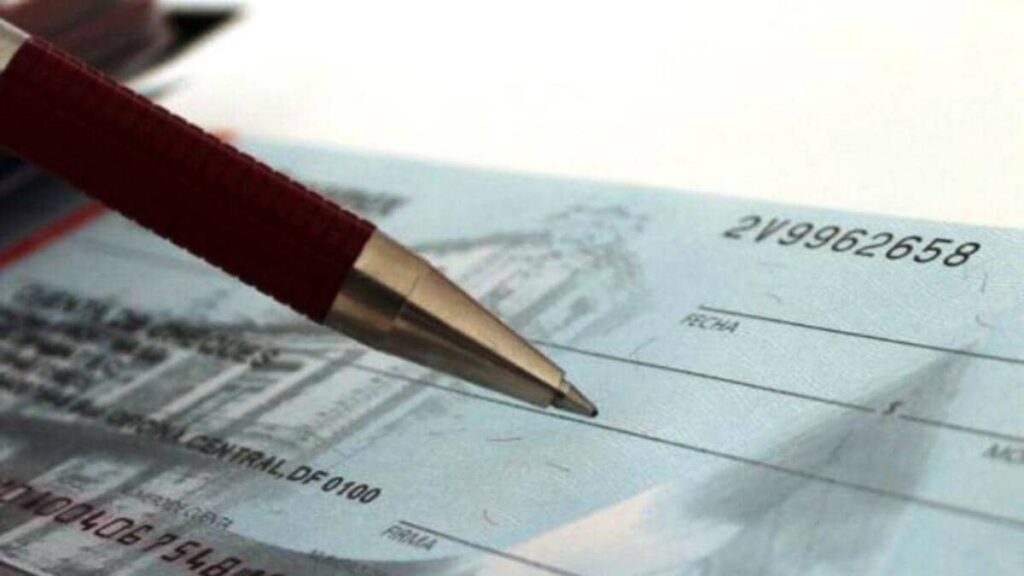President His Highness Sheikh Khalifa bin Zayed Al Nahyan signed federal decree legislation on September 27, 2020, revising portions of the articles and clauses of Federal Law No. (18) of 1993 Concerning the Commercial Transaction Law, which deals with incidents of issuance and bounced cheques.
What changes have been made to the laws governing bounced cheques, and how will they affect the payer and payee of a bounced cheque? Here’s everything you need to know.
While the revisions to certain elements of the Commercial Transaction Law will be outlined in Federal Decree-Law No. (14) of 2020,
What are the most significant changes to the regulations concerning bounced cheques, which would affect the vast majority of UAE residents?
Partial payment of cheques
One of the most significant changes revealed was the ability for partial payment of the cheque. Previously, a cheque would bounce if the full amount needed to honor it was not available in the cheque writer’s account; but, once the modifications are in place, banks will be compelled to honor partial amounts of cheques as well.
This means that if a cheque for Dh100,000 is written but the cheque writer’s account only has Dh80,000 available for payment against the cheque, the bank must pay Dh80,000 unless the cheque bearer declines the partial payment option.
All of the amendments to the federal decree law provide mechanisms and alternatives to ensure that the cheque value is collected in the quickest and most straightforward manner possible, including the requirement that the bank partially fulfills the cheque after deducting the full amount available to the beneficiary.
All of the amendments to the federal decree law provide mechanisms and alternatives to ensure that the cheque value is collected in the quickest and most straightforward manner possible, including the requirement that the bank partially fulfills the cheque after deducting the full amount available to the beneficiary.
This is mentioned in Article 617 of the law, which states: “Where the fund for payment is less than the value of the cheque, the drawee shall partially pay the value of the cheque up to the available fund unless the bearer rejects partial payment. In the case of partial payment, upon each partial payment, the drawee shall initial the back of the cheque confirming the partial payment and give back the origin of the cheque to the bearer along with a certificate to that effect.”
Any person or organization that is paying the money to the cheque holder, such as a bank or other financial institution, is referred to as the drawee. The individual to whom the money is owed is the holder of the cheque.
Stricter penalties for writing bounced cheques
Anyone convicted of issuing cheques with insufficient funds will be barred from receiving chequebooks from banks for a five-year term. They will also be required to pay a fine of not less than 10% of the amount of the cheque – with a minimum of Dh5,000 and a maximum of twice the amount of the cheque – or serve a six-month to the two-year sentence in prison.
In addition, convicted individuals’ professional or commercial activity may be suspended for up to six months. If the cheque was issued on behalf of a business body, the offender’s professional or commercial activities may be revoked, or the offender may be forced to declare bankruptcy if the offense is repeated.
This differs from the original rule, which imposed a monetary penalty ranging from Dh2,000 to Dh10,000, based on the amount written on the cheque.
A bounced cheque is considered an ‘executive deed’
Article 635 of the amendment states one of the most significant legal changes to how bounced cheques will be handled.
To recover the value of a bounced cheque, the cheque bearer does not need to file a claim or go through the legal process. He or she can simply approach the executive judge, submit the cheque, and request the execution of the individual who issued the cheque’s assets or bank accounts.
“A cheque, which bears the drawee’s stamp as non-paid for the unavailable or insufficient fund, shall constitute an executive instrument as per the Executive Regulation of the Federal Law No. (11) of 1992, and its bearer shall have the right to demand the coercive enforcement, wholly or partially,” according to the Article.
What exactly does it mean to consider a bounced cheque an “executive instrument”?
To recover the value of a bounced cheque, the cheque bearer does not need to file a claim or go through the legal process. He or she can simply approach the executive judge, submit the cheque, and request the execution of the individual who issued the cheque’s assets or bank accounts.
This provision will save time and money for cheque bearers, as they will be able to seek the court to enforce and execute on the cheque issuer’s accounts and assets in order to recover the amount claimed.
Because the plaintiff will be able to request the execution of the amount without having to go through multiple layers of judicial proceedings, this will not only relieve the strain on criminal and civil courts but will also increase business trust.
It is crucial to note, however, that this provision will result in a minor modification in the way bounced cheque cases are handled. When a cheque is returned unpaid, it can result in both civil and criminal charges. This clause would slightly alter the way civil cases are handled, as the cheque holder will no longer be required to file a claim and prove his or her case in court. Making a bounced cheque an executive instrument empowers the bearer to approach the court immediately and request enforcement.
When will the changes be implemented?
The amendments made by Federal Decree-Law No. (14) of 2020 will take effect on January 2, 2022.
